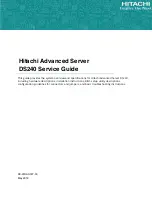
User’s
Guide
Document #40171-120 Rev. B
21
If you have a bridge or router located between the TROY print
server and the host computer, make sure that the device is set up to
allow the print server to send and receive data from the host. For
example, a bridge can be set up to only allow certain types of
Ethernet addresses to pass through (a process known as filtering);
therefore, such a bridge must be configured to allow TROY print
server addresses. Likewise, a router can be set up to pass only
certain protocols, so be sure that the desired protocol can be passed
through to the TROY print server. In the case of routers, also
make sure that the protocol is routable (LAT, NetBEUI, and
DLC/LLC are not routable).
If the job exists in the queue but does not print, ensure that you are
not trying to print a text job to a PostScript printer. If you have a
printer that is capable of automatic language switching, ensure that
the printer is not forced into PostScript mode.
Make sure that you are not trying to perform an illegal operation,
such as attempting to print a legal-size form when the printer only
supports 8.5" x 11" paper.
Troubleshooting Network Configuration Problems
If you are using TCP/IP, make sure that your computer and the
print server are on the same IP segment or can reach each other
with a PING command from the host. The IP Address you assign
to the print server must be on the same logical network as your
host computers (e.g., if your computer has an IP address of
192.189.207.3, the PocketPro USB print server should have an IP
of 192.189.207.x, where x is an integer between 1 and 254), or you
must properly configure your router address to work with the print
server.
If your print server is set to Auto or DHCP for obtaining an IP
Address, it’s possible the print server’s IP Address can change.
Either configure your DHCP Server to give the print server a
permanent lease, or configure the print server to be on a STATIC
address outside the scope of DHCP addresses.
















































